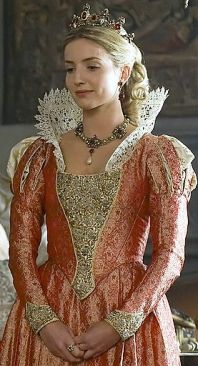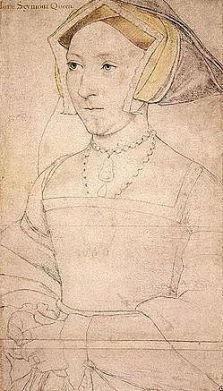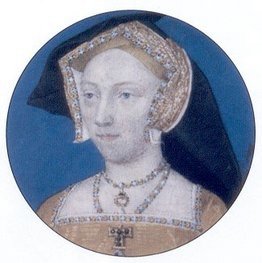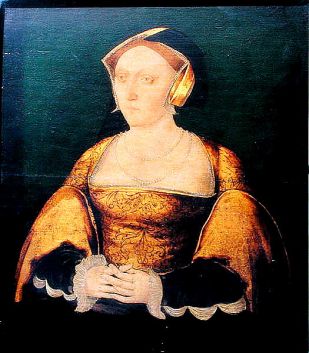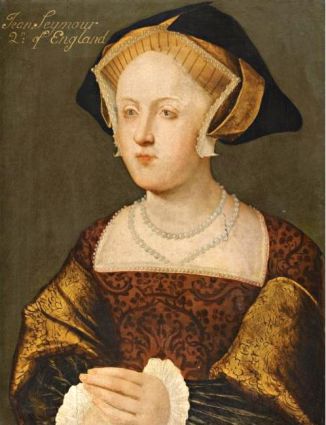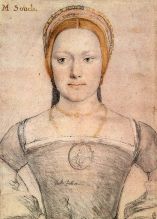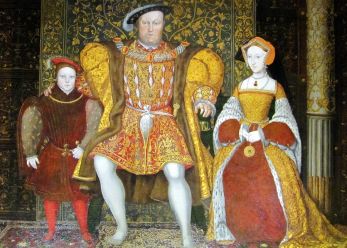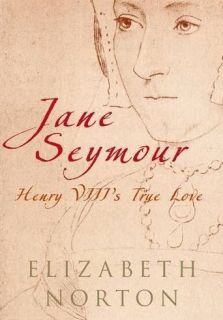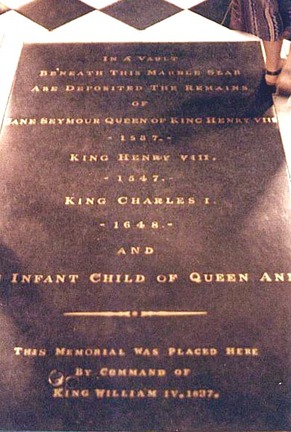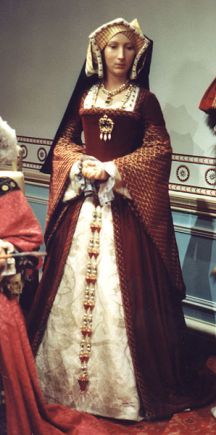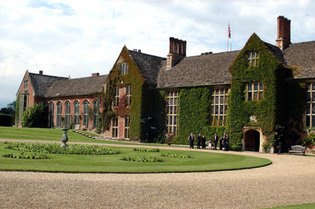Jane Seymour - Historical profile
| "...fairest of all Henry's wives" or "Plain Jane"? c.1508 - 1537 (29 yrs) Queen Consort May 30, 1536 - October 24, 1537 (16 months) Timeline Click EasyEdit to update this page! (Don't see the EasyEdit button above? <a href="/#signin" target="_self">Sign in</a> or <a href="/accountnew" target="_self">Sign up</a>.) |
INTERESTING FACTS:
A member of the king's privy council Sir John Russell said: "that the richer queen Jane was dressed the fairer she appeared; on the contrary, the better Anne Boleyn was apparelled the worse she looked: but that queen Jane was the fairest of all Henry's wives," However Ambassador Chapuys who although championed Jane was less than flattering saying: "She is of middle height and nobody thinks that she has much beauty. Her complexion is so whitish that she may be called rather pale........she is not very intelligent and is said to be rather haughty" Historian David Starkey says: "Apparently, her beautiful, pale complexion was not enough to offset her large nose, small eyes and compressed lips. It was Jane Seymour's virtuous and gentle nature that attracted the king for she was indeed a "plain Jane." Yet, she, like Anne Boleyn, had lured the king away from his wife. But while Anne would be portrayed as a witch, Jane would be forever remembered as a saint." Contemporary Miniature of Jane by Lucas Horenbout
| 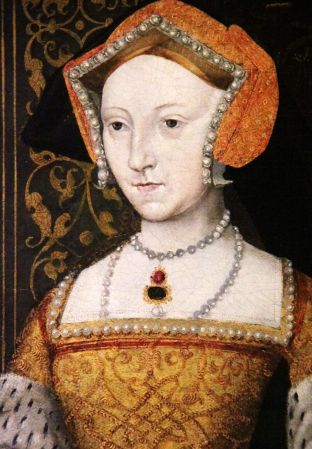 c.1545 Detail of dynastic painting of "the Family of Henry VIII" painted after Jane's death and when Catherine Parr was the queen. Can be seen at Hampton Court Palace
| |||
| Was Jane Seymour really a virgin? Approximately 27 years old when the king began his courtship, Jane had been at court for 6 years. Although her virtuous behavior was praised by everyone, Spanish Ambassador Chapuys thought it unlikely that she was still chaste. According to Chapuys, Jane, "being an Englishwoman and having been so long" at court, where immorality was widespread, could not be as virtuous as was popularly assumed. Chapuys stated that king was not troubled by Jane's chastity or lack thereof "since he may marry her on condition she is a maid, and when he wants a divorce there will be plenty of witnesses ready to testify that she was not." Despite the speculation, there is no proof that Jane had sexual dalliances prior to her relationship with King Henry.
|
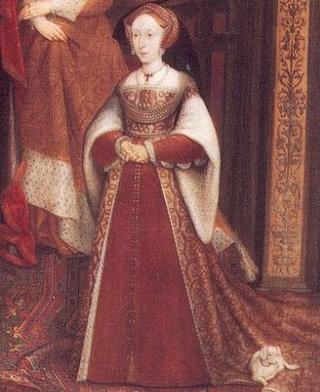 Jane, from dynastic portrait of Henry VIII and his parents (notice the poodle on her skirt) The Whitehall Portrait | |||
| One of the king's love-letters to his new favourite Jane Seymour seems to have been written while the fallen Queen Anne Boleyn was waiting, her doom in prison:
| Jane Seymour found herself courted, not only by King Henry VIII, but also by Anne Boleyn's enemies and Ambassador Chapuys ' Catholic Faction. [ *See the "Tudor Court Politics" page on the wiki] "The ambassador advised her to drop heavy hints about Anne's heretical leanings in Henry's ear, and to say that the people of England would never accept her as their true Queen. She must say these things in the presence of her supporters, who would all then swear, on their allegiance to the King, that she spoke the truth. Jane certainly acted upon this advice, and it had the desired effect upon the King, who was now receptive to criticism of his wife. Jane also followed her own instincts, and the advice of her friends, by not admitting Henry to her bed. Instead, she dropped heavy hints about marriage, which fell on fertile ground, and before long Henry began to behave towards her with great circumspection, leading others to believe that he was already considering her as a future wife. From this time on, he took care to avoid any hint of scandal attaching itself to her name; her family and adherents were quick to notice this new deference on the part of the King, and Sir Francis Bryan told Jane's parents that they would shortly see their daughter 'well bestowed' in marriage" [Alison Weir, The Six Wives of Henry VIII, p. 306]. | |||
| "We might wonder what part Jane Seymour had played in bringing Anne down. Nothing is known of her involvement, if any, in the plot against her mistress, apart from the fact that, since late March, encouraged and endorsed by her supporters, she had been actively poisoning Henry's mind against Anne. When Henry made it clear that he wanted to marry her. she must have known that the Queen's removal would be necessary. Yet even when it became clear that this would be by more brutal means than the annulment of a marriage Jane apparently did not flinch from her chosen course, nor betray any trace of guilt. Of course, it could be argued that she would have been powerless in the face of the King's will, but Jane was not without ambition or a streak of ruthlessness. She had embarked on her campaign to snare Henry knowing fully what she was doing, and she was clearly convinced of the rightness of it. For Anne, she seems to have had no pity whatsoever: to Jane, as to all the Imperialists, Anne had been the chief cause of the sufferings of the late Queen Katherine and of Lady Mary. Probably Jane had no difficulty in believing the charges against Anne, and regarded the proceedings as justified. Yet it must have occurred to her that the laying of such charges was all too conveniently timely. Chapuys was apparently in touch with Jane and her friends at this time. He was certainly aware that she was anticipating becoming Henry;s wife, for he had heard that "even before the arrest of the concubine, the King had spoken with Mistress Seymour of their future marriage". This could have been at any time after Jane was installed in her brother's apartments at the end of March..." ~ Alison Weir in "Lady in the Tower" | "And contemporaries all commented on Jane Seymour's intelligence: in this she was more clearly like her cautious brother Edward than her dashing brother Tom. She was also naturally sweet-natured (no angry words or tantrums here) and virtuous -- her virtue was another topic on there was general agreement." "Did Polonius -- here represented by Edward Seymour and his associates -- coach their Ophelia in this pretty maidenly speech to her middle-aged prince? Perhaps: on the other hand did Jane Seymour herself really need teaching to stand 'quite firm' on this important point? Once again, it is not necessary to believe that the girl herself was playing a role -- an uncharacteristic one -- just because the results of her withdrawal is represented without artifice that purity a sentimental older man -- and Henry was certainly sentimental at the start of his love affairs -- was likely to admire. There was another charge levelled against the new favourite: Jane was supposed to have been coached to tell the King that his subjects 'abominated' his second marriage, because they regarded it as illegitimate. But this was hardly an outrageous point of view and probably represented her own genuine opinion. The future would reveal that Jane Seymour did not hold the kind of Lutheran religious views that would lead her to support the Boleyn marriage, but clung to the old ways. Similarly, most people of England in their heart of hearts had always regraded the unpopular match as against the law of God. Only now was it possible to express such views without fear. Jane Seymour was as conventional in this as she was in other matters." Antonia Fraser - pg 236, 240-241 | |||
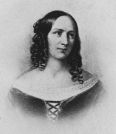 From Victorian Historian <a class="external" href="http://www.nndb.com/people/184/000097890/" rel="nofollow" target="_blank" title="Agnes Strickland">Agnes Strickland</a> From Victorian Historian <a class="external" href="http://www.nndb.com/people/184/000097890/" rel="nofollow" target="_blank" title="Agnes Strickland">Agnes Strickland</a> "Lives of the Queens of England" (1850) This assertion has been generally repeated by all historians to the present hour, yet, doubtless, the question has frequently occurred to their readers, in what did her merit consist? Customs may alter at various eras, but the laws of moral justice are unalterable: difficult would it be to reconcile them with the first actions known of this discreet lady, for discretion is the attribute peculiarly challenged as her own. Yet Jane Seymour's shameless conduct in receiving the courtship of Henry VIII. was the commencement of the severe calamities that befell her mistress, Anne Boleyn. Scripture points out as an especial odium the circumstance of a handmaid taking the place of her mistress. Odious enough was the case when Anne Boleyn supplanted the right royal Katharine of Aragon, but the discreet Jane Seymour received the addresses of her mistress's husband, and passively beheld the mortal anguish of Anne Boleyn when that unhappy queen was in a state which peculiarly demanded feminine sympathy; she knew that the discovery of Henry's inconstancy had nearly destroyed her, whilst the shock actually destroyed her infant. Jane saw murderous accusations got up against the queen, which finally brought her to the scaffold, yet she gave her hand to the regal ruffian before his wife's corpse was cold. Yes; four-and-twenty hours had not elapsed since the sword was reddened with the blood of her mistress, when Jane Seymour became the bride of Henry VIII. And let it be remembered that a royal marriage could not have been celebrated without previous preparation, which must have proceeded simultaneously with the heart-rending events of Anne Boleyn's last agonized hours. The wedding-cakes must have been baking, the wedding-dinner providing, the wedding-clothes preparing, while the life-blood was yet running warm in the veins of the victim, whose place was to be rendered vacant by violent death. The picture is repulsive enough, but it becomes tenfold more abhorrent when the woman who caused the whole tragedy is loaded with panegyric. On the morning of the 19th of May, Henry VIII., attired for the chase, with his huntsmen and hounds around him, was standing under the spreading oak, breathlessly awaiting the signal-gun from the Tower which was to announce that the sword had fallen on the neck of his once "entirely beloved Anne Boleyn." At last, when the bright summer sun rode high towards its meridian, the sullen sound of the death-gun boomed along the windings of the Thames. Henry started with ferocious joy. "Ha, ha " he cried with satisfaction, "the deed is done. Uncouple the hounds and away!" he chase that day bent towards the west, whether the stag led it in that direction or not. The tradition of Richmond adds, that the king was likewise advised of the execution by a signal from a flag hoisted on the spire of old St. Paul's, which was seen through a glade of the park to the east. At night the king was at Wolf-hall, in Wilts, telling the news to his elected bride; the next morning he married her, May 20, 1536. " Detail of a portrait of Henry VIII's family, which is located in Hampton Court. Jane is seated next to Henry, despite having been dead for several years and Henry married to Catherine Parr at the time the portrait was commissioned in 1545. | "Before the miscarriage [of Anne Boleyn's child], Henry might have enjoyed an asexual flirtation with the maidenly Jane Seymour, or he might have hoped to win her over as he had a number of other women. But until Anne's child was born he could not think of marrying Jane, The miscarriage changed all that. Now Henry wanted to be rid of Anne, and he wanted to marry Jane. What Jane wanted, if indeed she wanted anything is hard to ascertain. Among all the women Henry married --- among all the major figures of that dramatic era -- Jane is the only one whose personality never clearly emerges. In popular mythology she's close to a saint, the perfect foil to the temptress Anne Boleyn. It's an ironic image, since she did exactly what Anne had done. Having attracted the king's interest, she refused his advances without removing herself from his presence. Then as the efforts to rid himself of his current wife got underway, she accepted her role as the wife's replacement. There are two differences, neither of which are to her credit. The first is that Anne unlike Katherine, was still young enough to conceive again when Henry threw her over. The second is that at some point it became clear to Jane that Anne was not to be merely discarded, but killed. ....While most accounts in her own time extol her great virtue, they are notably lacking in detail. Despite the praise, the figure that emerges in contemporary accounts is neither saint nor villain, neither virtuous nor calculating.Nothing as defined as malice or ambition or compassion or warmth or coldness comes through the description of Jane. In all the events in which she took part, Jane as an individual seems puzzlingly almost eerily absent. Her brother pushed her at the king, and she, in Strickland's apt word, "received" Henry's advances.Acting as a virtuous woman was supposed to, and as Henry seems to have wanted her to, she held out for marriage, passively watching the horrifying process of Anne's destruction. Did she believe in Anne's guilt? Was she angry with Anne for betraying Henry? With Henry for killing Anne? Was she frightened at the thought of marrying a man who humiliated one wife and was about to kill another? Did she ever turn to her brother and say "get me out of this?" We don't know. We don't even have enough material to make an educated guess. ...Although Henry didn't know it, [Jane's Brother] Edward Seymour was probably doing a great deal more than giving access to Jane. Approached by Princess Mary's supporters on the Privy Council, he had become as active member of the plot to overthrow Anne Boleyn. He and the others told Jane how to behave with Henry, and she complied. Along with ostentatiously preserving her chastity, Jane was to speak against Anne to Henry, always in the presence of supporters among the nobility, who would then agree with her. She was to emphasize "how much his subjects abominate the marriage contract with the concubine and that no one considers it legitimate". Again Jane went along -- gladly? sadly? Or indifferently doing as she was told? .... As soon as Anne was condemned to die, Henry sent a messenger to tell Jane the good news. It's an unappetizing picture, the rush to assure his new love of the old one's imminent execution, and Henry compounded the ugliness by running off that same afternoon to visit Jane in person. One wonders if they laughed together, envisioning Anne's death -- or did Jane chastely console the King in his elaborate charade of betrayed husband?" [Excerpt from Karen Lindsey's Divorced Beheaded Survived: A Feminist Reinterpretation of The Wives of Henry VIII]] | |||
| Historian Eric Ives ("Life &Death of Anne Boleyn") says that he feels Agnes Strickland's view of Jane was an over-harsh Victorian judgement, but he says: "Jane was willing to be used to oust Anne; Henry's first marriage was dead before Anne came on the scene. Anne's sexuality challenged Henry, but Jane dangled her virtue as a bait. Anne offered Henry marriage or nothing. Jane upped her price once the chance of a bigger prize appeared; Anne was no man's creature, Jane was a willing tool whose personality it is more than kind to describe as 'pliable'.....Chapuys considered that the guilt was primarily Henry's. Londoners watching at the time blamed Henry & Jane, both." | Comments: Most historians do not record Jane the way Strickland does, She is one of the first historians who questions Jane's motives and other Historians such as Hester W. Chapman, Joanna Denny, Mary Louise Bruce, and Carolly Erickson also share Strickland's view of Jane. David Starkey does not consider Jane of much importance in comparison to her predecessor Katherine of Aragon and Anne Boleyn. Antonia Fraser and Alison Weir paint Jane in a favourable light. All in all, Jane Seymour's motives and ambitions, like her predecessor Anne Boleyn are often questioned, with some historians vilifying her and others praising her. | |||
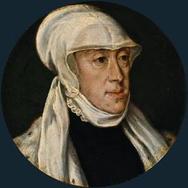 Mary of Habsburg (1505 -1558), also named Mary, Maria, or Marie of Hungary, of Austria, of Castille, or of Burgundy (sister of Emperor Charles V & niece of Margaret of Austria) said : The King had " paid considerable attention to [Jane] Seymour before her predecessor [Anne Boleyn] was dead which, along with the fact that none of those executed with her except the organist [Mark Smeaton] admitted the deed, any more than she had, made people think he invented the ploy just to get rid of her. Nevertheless the woman herself suffered no great injustice by this for she was well known to be a worthless character... I think that women will not be all that happy if such ways of going on become the custom - and with good reason. And although I do not intend to take the risk myself, yet for the sake of the female sex I will pray like the rest that God will protect us" | 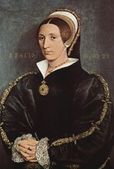 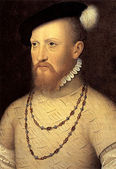 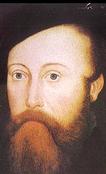 Jane's siblings, (left to right) Elizabeth Seymour (Identification of this portrait is disputed, in March 2008 David Starkey identified this as Katherine Howard ), Edward Seymour (Lord Protector of England), and Thomas Seymour (Lord High Admiral of England), all benefited greatly from their sister's raise to the throne and her son, Edward VI as well. | |||
| Jane Seymour's letter and signature announcing the birth of Prince Edward 12th October 1537 Right trusty and well beloved, we greet you well, and for as much as by the inestimable goodness and grace of Almighty God, we be delivered and brought in childbed of a prince, concieved in most lawful matrimony between my Lord the King's majesty and us, doubting not but that for love and affection which you bear unto us and to the commonwealth of this realm, the knowledge thereof should be joyous and glad tidings unto you, we have thought good to certify you of the same. To the intent you might not only render unto God condign thanks and prayers for so great a benefit but also continually pray for the long continuance and preservation of the same here in this life to the honour of God, joy and pleasure of my Lord the King and us, and the universal weal, quiet and tranquillity of this whole realm.  Jane the Quene | LITERATURE: Non-fiction
Fiction
|
| Jane's grave in St. George's Chapel at Windsor Castle, along side Henry VIII | |
| "Here a Phoenix lieth, whose death To another Phoenix gave breath It is to be lamented much, The world at once ne'er knew two such." Epitaph of Jane Seymour, who's symbol was the phoenix. | |
| | |
